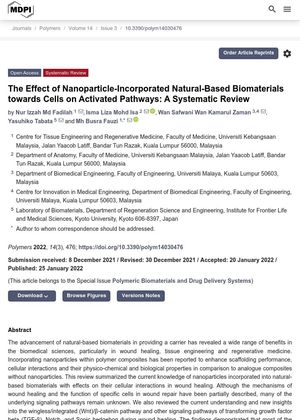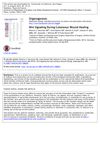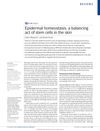The Effect of Nanoparticle-Incorporated Natural-Based Biomaterials on Cells and Activated Pathways: A Systematic Review
January 2022
in “
Polymers
”

TLDR Nanoparticles added to natural materials like cellulose and collagen can improve cell growth and wound healing, but more testing is needed to ensure they're safe and effective.
This systematic review discusses the benefits of incorporating nanoparticles into natural-based biomaterials for applications in wound healing, tissue engineering, and regenerative medicine. The biomaterials used included cellulose, collagen, and natural polymers like chitosan and alginate, and were fabricated into nanofibers, nanocomposite scaffolds, hydrogels, and films. The review found that these nanoparticle-incorporated biomaterials enhance cell attachment, viability, proliferation, and migration, and improve the scaffolding's physico-chemical and biological properties. The study also highlighted the role of various signaling pathways, such as Wnt/β-catenin, TGF-β, Notch, and Sonic hedgehog in wound healing. However, concerns about the uncontrolled release of nanoparticles and potential toxicity were raised. The review suggests more in vivo studies and clinical trials are needed to assess the efficacy and safety of these biomaterials.





